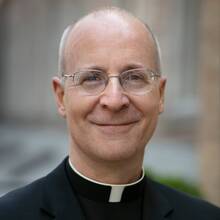
You didn't think we were going to pass up an opportunity to review "The Artist," did you? Especially after its performance at the Oscars? Victor Stepien looks at this unusual film:
Silent movies came to an end in the 1920s. As talkies took over, a whole generation of celebrated actors were culled from the studios and tossed aside. The Wall Street crash of 1929 emptied their bank accounts and humbled their souls. The early days of Hollywood did not prepare them for the harsh reality of the American Dream. Success, they discovered, does not necessarily lead to grace.
It takes a French director, Michel Hazanavicius, and a French cast to bring this cautionary tale to life in The Artist. Despite the old-fashioned format—the film is almost entirely silent, leaving the viewers to read facial expressions and intertitles—it has received three Golden Globes and five Academy Awards, including Best Actor for Jean Dujardin, the new star du jour.
Like most silent films, music is a seminal part of this cinematographic experience. So is a palpable sense of theatricality, as the movie starts with a film-within-a-film in which George Valentin, a successful actor played by Dujardin, attends a screening of his latest movie. Outside the theater, he meets Peppy Miller (Berenice Bejo), a young woman who accidentally trips over him while asking for an autograph. Shortly after they are photographed together on the front page of Variety, she decides to audition as an extra in his next movie, and they start a dreamy, if desultory, flirtation. Eventually, Peppy becomes a movie star in talkies as George’s career as a silent actor comes to an end. Still, their romantic bond grows stronger despite the ebb and flow of their careers. A spectacle of French sentimentality, the film upholds the glory of romance over petty careerist ambition. It is at once a confrontation and an assimilation of French and American values.
The director takes us into the rosy neighborhood of Beverly Hills where the two main characters live, surrounded by rustling palm trees and grandiose mansions. Still, it is not financial success that matters, but the artist’s introspective bent, which aims for grace in a town ruled by wolves. “The Artist” is the epitome of a tragi-comedy, with the sound of music moving George and Peppy’s love forward, leaving Hollywood’s money-obsessed wolves to recede from memory.
James Martin, SJ







